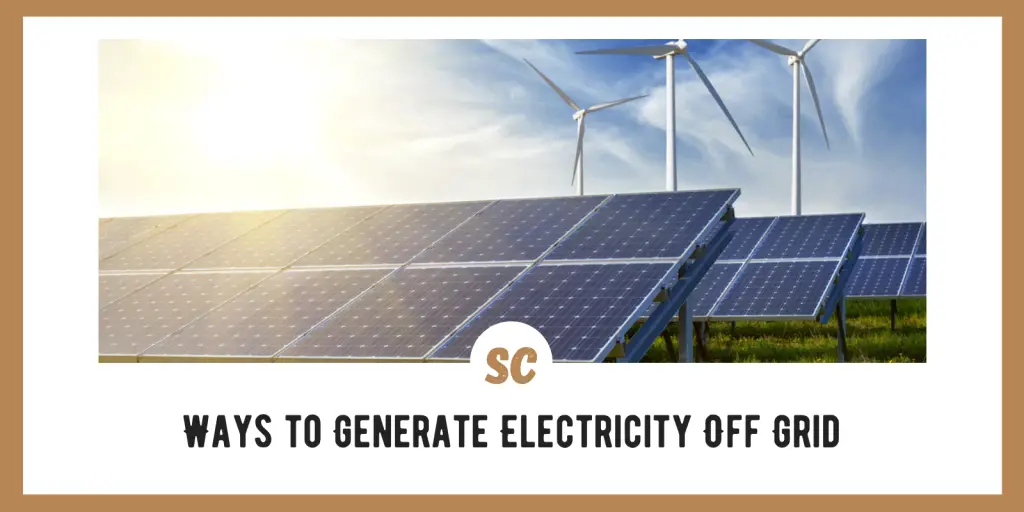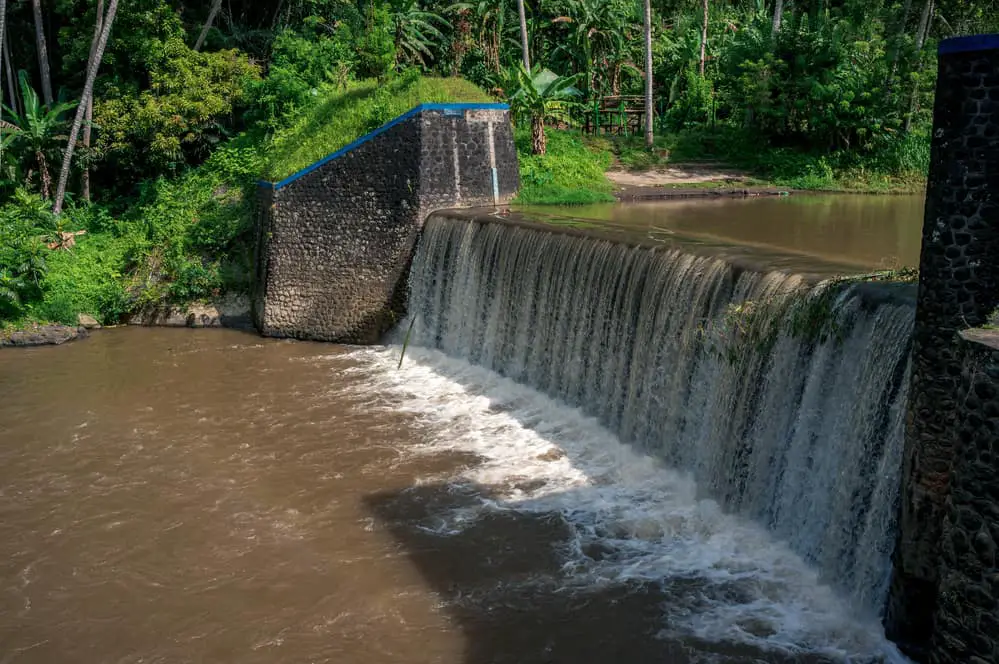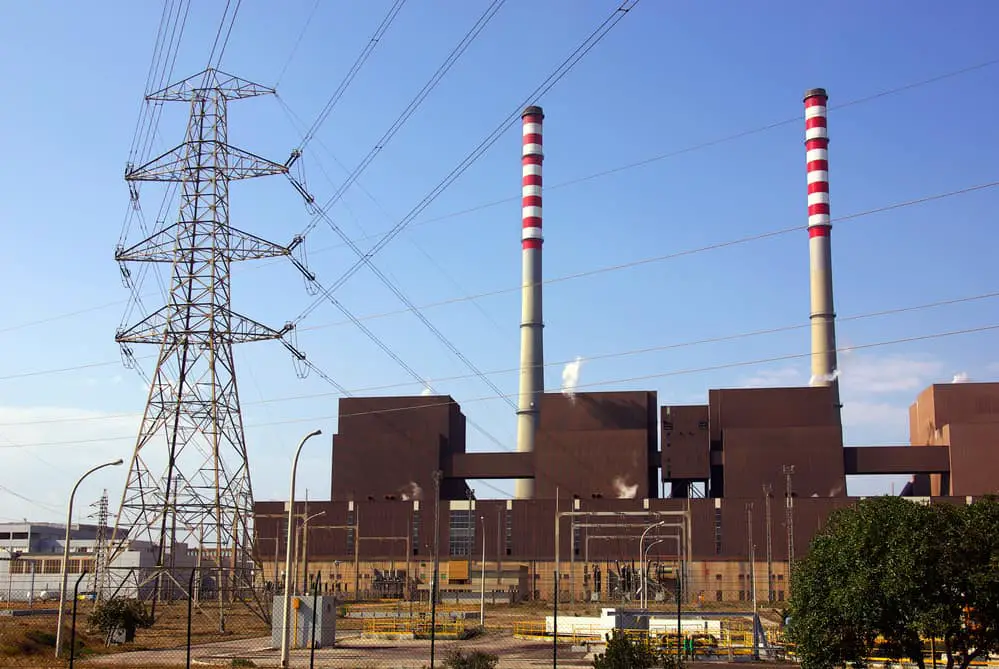For preppers, homesteaders, and self-reliant people the ability to produce your electricity is pretty important.
As much as we try to get away from certain modern ways, cutting ourselves off from power usage is pretty difficult. From making our morning coffee to using our devices, to something as simple as turning a light on, using electricity has become a part of our lives.
However, getting off the grid by producing your power should be something to think about for several of reasons.
First, you may want to live somewhere that it is impossible or expensive to get hooked up to the grid.
Secondly, during an emergency when the grid is down you will still have the power to take care of your needs.
Lastly, fossil fuels are a finite resource and will eventually run out. When that happens, it will be a good idea to have some other ways of producing electricity in place.
SKIP AHEAD
6 Ways to Generate Electricity Off the Grid
Depending on your location and power usage one of the options below may not be enough, so a combination of the methods may be necessary.
Solar
Solar is by far one of the most popular alternative energy sources available. In part, this is because almost everywhere on the planet receives sunlight every day.
Solar panels are also quite versatile in that they are available in different sizes, can be installed on houses or other structures, and even installed in a field.
A common misconception with solar panels is that they work equally well everywhere. Unfortunately, that is not true because some locations receive more hours of sunlight and more intensity than others.
Pros
- Will produce electricity on cloudy days, just not as much
- Some regions provide grants for installing solar power on your property
- Panels are easily transported when moving
- Can be installed in various locations on the property
Cons
- Reduced power during cloudy days
- Do not work during the night
- Won’t work if covered in snow, dust, or other debris
- Their level of efficiency depends on location
Hydroelectric
Hydroelectric isn’t discussed a whole lot on the smaller scale but that does not mean it should be discarded as an applicable source of power.
Of course, this option is only going to work if your property has a dependable moving water source. This is because hydroelectric power depends on a steady water current of water.
Hydroelectric works by using the current of water to turn a wheel or turbine which rotates a shaft leading back to a generator that produces electricity.
Smaller-scale hydroelectric generators do not produce a lot of power so numerous units may need to be installed on your property.
Another way to increase the power that is generated is by increasing the flow of water in the water source. There are a few different ways to do this but the idea is to either increase the amount of water hitting the turbine blades or channeling the water through a tighter area which will increase its pressure.
Also, many homes are not located near a moving water source. Electricity loses power the further it has to travel, so the distance from the source is something to think about.
Pros
- Should be working all the time
- Small scale units are affordable
- Is largely not dependent on the weather
Cons
- Need to have a source of moving water
- Water source needs to be dependable, i.e., no droughts, flooding, or freezing conditions
- Ideally, the water source will be located close to the home
Wind
The process of using wind power is almost identical to that of using hydroelectric power. The difference is that instead of using water to turn a turbine, the wind is used.
I’m sure that most people reading this have seen large-scale turbines or wind farms, either in person or in pictures. The principle of those turbines will remain the same but the ones you use on your property will not be anywhere near that large.
Just as the case is with solar panels, assessing the amount of wind in your region will be important before installing a wind-powered turbine to determine if it will be cost-effective.
One thing to keep in mind about wind turbines is that they do not need to be all that large, nor do they have to have the typical three-blade design to be effective.
For example, some people that live on sailboats and spend most of their time on the water will also generate their power through the use of solar panels and small wind generators.
These generators are small enough that they can be held in two hands and the turbine may have more blades or the blades could be completely replaced with a different design that catches the wind.
Pros
- A single turbine does not take up much space
- Several smaller turbines could be scattered throughout the property
- Smaller-scale turbines could be placed on buildings
Cons
- Some turbines can be noisy
- Requires a minimum amount of continuous wind to produce power
- Depending on their size and design, wind turbines can pose a safety hazard
Thermoelectric
Thermoelectric power is based on something called the Seebeck Effect. Simply put it takes a temperature differential and converts it into electrical power.
To give you a better idea of how this works, look at a BioLite Campstove. Biomass is placed into the stoves and a fire is made. The heat from the fire passes over a heat probe where the temperature differential occurs. The accompanying electrical power that is created is then stored in a battery bank.
Pros
- They capture waste heat loss
- When paired with a wood or other indoor stove that run constantly, it will provide continuous power
- Is not dependent on sunlight, wind, or water currents
Cons
- Not the most efficient form of generating power
Geothermal Electricity
Geothermal power is the process of tapping into underground sources of hot water. These hot water beds produce steam which is piped to the surface where the steam turns turbines for a generator to create electricity.
However, tapping into preexisting hot water beds is not the only way this works. Cool water can be pumped underground where the above process is then repeated.
Pros
- Uses a clean source of energy for heating the water
- Runs continuous and does not rely on sunlight, wind, water currents, or the constant burning of a fuel
Cons
- High costs involved
- Concerns that this could negative effects on underground resources
Boiler
Boilers use the same concept as geothermal for producing electricity.
They consist of a tank of water that is heated, usually by natural gas, although other fuels could be used. Once the water reaches its boiling point it turns into steam which is channeled through a series of pipes. The pressure created by the steam then rotates a turbine and a generator creates electricity.
Pros
- These can be scaled up or down as needed to fit a buildings specific electrical needs
- Can produce electricity day or night and does not rely on wind or water currents
Cons
- Relies on a source of fuel to create heat
- Boilers have been known to pose safety risks because there are high pressures involved in their operation
Small Scale Power Generation
Before closing out this article I did want to share my experience with two forms of small-scale, off-grid power generation.
The first is with solar energy. For the last six years or so I have used small, portable solar panels for my power needs when I am not near the grid or during power outages at my home.
The solar panels I use are from SunJack and they fold up to the size of a tablet or laptop, so they are extremely easy to transport wherever I go.
While they will not power my home, they have been great for keeping small devices powered when I need them the most.
- Rugged, Durable, Waterproof. Weatherproof ETFE exterior layer improves performance and durability,...
- Portable folding solar panel. Compact panels fold down to the size of a tablet and easily fit into...
Last update on 2024-04-25 at 13:43 / Affiliate links / Images from Amazon Product Advertising API
The second form is a thermoelectric generator. Within the last year or so I have had the pleasure of using a CampStove 2 by BioLite.
This is a pretty cool little camp stove that is about the size of a small thermos and easily fits in a backpack. Once a little fire gets going inside it starts charging up a battery bank inside. The power can then be accessed through a USB port on the front of the generator pack.
- Camping stove fueled by sticks, wood scraps or pellets creates fire for cooking and boiling water,...
- Renewable biomass fuel such as twigs, sticks, pinecones, and other forest floor debris is readily...
Last update on 2024-04-25 at 13:43 / Affiliate links / Images from Amazon Product Advertising API
Like the portable solar panels above, this stove is not going to power anything large, but it is a great way of producing energy from heat that would otherwise be wasted.
Wrap Up
I know that a lot of people may be hesitant at first about getting themselves off the power grid by severing that connection. Being connected to the power grid is easy.
Setting up a way of creating electricity off the grid is not going to be easy at first, it will require investment, effort to research, install, and maintain.
The upside is that you will no longer be dependent on someone else for your power requirements and you can produce as little or as much power as you want.
Thanks for reading and good luck off the grid!
If you have any questions, comments, or experiences with any of the above methods, please sound off in the comment section below and let us know about it!








